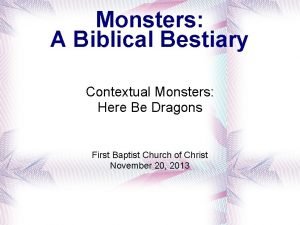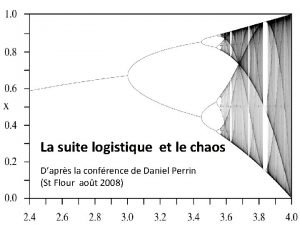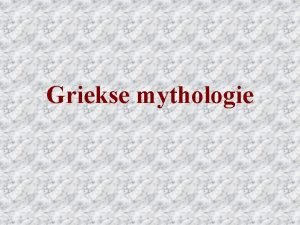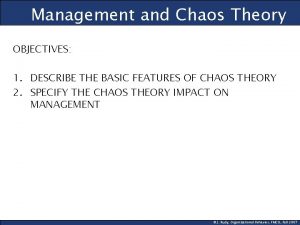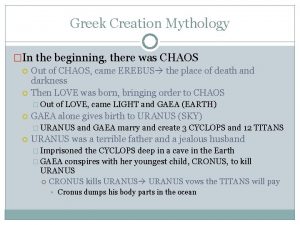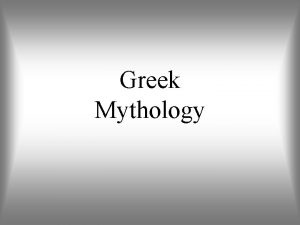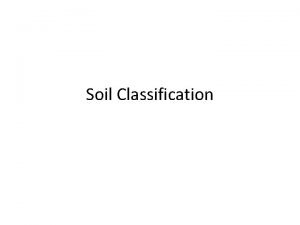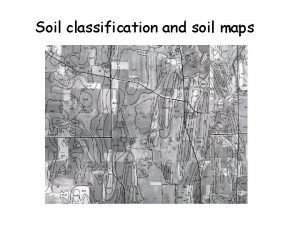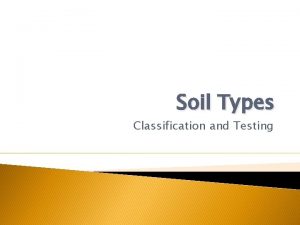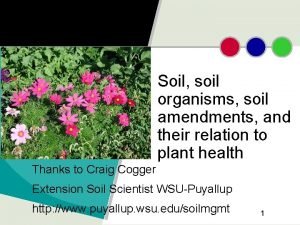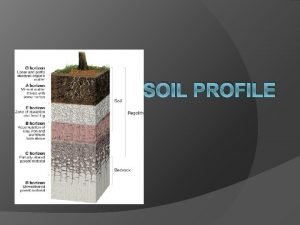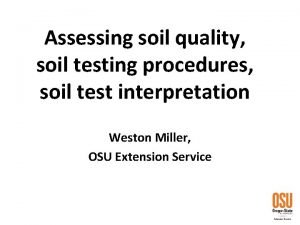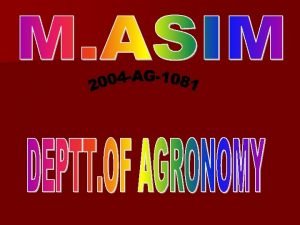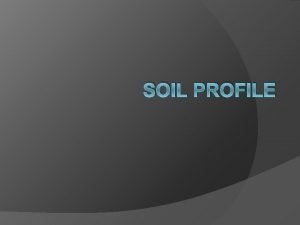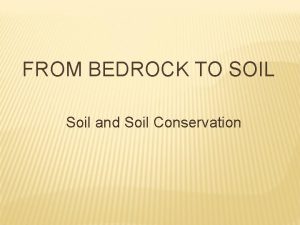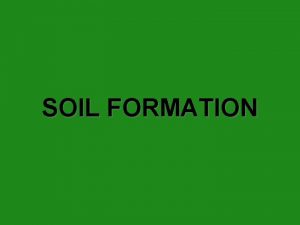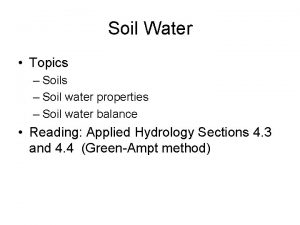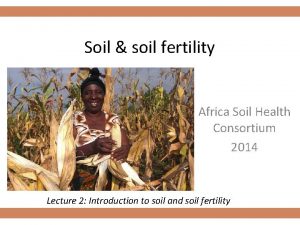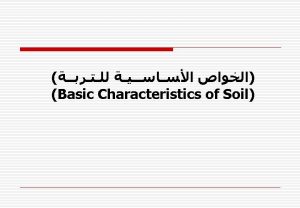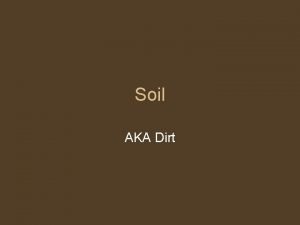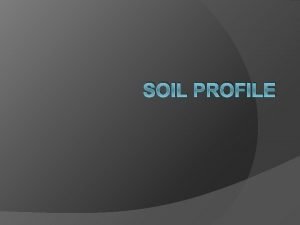SOIL CLASSIFICATION What is purpose of classification Chaos

























- Slides: 25

SOIL CLASSIFICATION

What is purpose of classification? “Chaos was the rule of nature; order was the dream of man”. Henry Adams

How would you go about classifying soil?

Ethnopedology • Study of folk soil knowledge • “folk”, “traditional”, “indigenous”, “local” • • Soil knowledge held by people who have occupied land for a long time Many ways of knowing • Western science looked down on local soil knowledge as unscientific. • Folk soil knowledge uses spatial and time scales much more relevant to sustainable agriculture.

Local soil knowledge • Time-tested • Strategies that have been tried over centuries (or millennia) compared to < 100 yrs of industrial agriculture • Provides insights about human responses to change (climate change, soil erosion) • Many properties used (taste!, texture, color, etc) but all are about function of soil in land use (need for water, nutrients, aeration, support) • Does not imply that indigenous groups have not substantially altered land or caused environmental degradation problems; can learn from mistakes, too

2000 BC to 1500 AD

Maya occupation of Yucatan peninsula • 1200 BC to AD 1300 How did the Maya manage to feed millions of people for thousands of years in an area that is today sparsely populated and agriculturally poor?

Maya Lowlands Highlands

Climates of Maya Lowlands: BS semi-arid steppe Aw tropical savanna Am tropical wet-dry Af tropical rainforest


Agricultural adaptive regions in the Maya lowlands


Lari, Peru • 1500 yrs agriculture • Terraces Compared to uncultivated: thicker A, lower bulk density, higher organic carbon, higher N and P; • Impressive management suggests a substantial body of soil knowledge •


FAO/UNESCO • International system, adopted for purposes of creating a global map • Has been replaced by World Reference Base • Uses some classes from other systems





USDA Soil Taxonomy system • Seventh Approximation • Originally 10 Great Orders Have added two more (Andisols, Gelisols) • Many include another order “ Anthrosols” • • Hierarchical system

ORDER SUBORDER GREAT GROUP SUBGROUP FAMILY SERIES SUBORDER

Hierarchical categories • Order • Alfisol • Suborder • Udalfs • Great group • Hapludalfs • Subgroup • Typic hapludalfs • Family • Fine, loamy, mixed, superactive, frigid • Series • Nebish Fine-loamy, mixed, superactive, frigid Typic Hapludalfs

mean annual temp <8°C; >6°C range Nebish series Humid climate Fine-loamy, mixed, superactive, frigid Typic Hapludalfs particle size high CEC mixture of clay minerals Alfisol minimum horizon typical

Naytahwaush series Fine, smectitic, frigid Oxyaquic Hapludalfs Fine-textured, smectite clays, <8 C, water-saturated, minimum horizons, humid climate Alfisols

Fargo series • https: //soilseries. sc. egov. usda. gov/ Fine, smectitic, frigid Typic Epiaquerts
 Living soil vs dead soil
Living soil vs dead soil Four major spheres of the earth
Four major spheres of the earth Na początku był chaos biblia
Na początku był chaos biblia Bitterrezeptoren
Bitterrezeptoren The firmament in the bible
The firmament in the bible Fonction logistique chaos
Fonction logistique chaos Griekse mythologie stamboom
Griekse mythologie stamboom Greek mythology chaos family tree
Greek mythology chaos family tree Animals that represent chaos
Animals that represent chaos Copyright chaos
Copyright chaos Chaos theory jurassic park
Chaos theory jurassic park Chaos sound test
Chaos sound test Quarks chaos and christianity
Quarks chaos and christianity Chaos theory management
Chaos theory management Kandinsky chaos control
Kandinsky chaos control Nihilists
Nihilists Chaos theory and cryptology
Chaos theory and cryptology Iq test
Iq test Fractals and chaos
Fractals and chaos Uranos i gaja drzewo genealogiczne
Uranos i gaja drzewo genealogiczne Chaos greek mythology
Chaos greek mythology Chaos tool suite
Chaos tool suite Chaos in de klas
Chaos in de klas Aip chaos
Aip chaos Chaos synonym
Chaos synonym All about artemis
All about artemis




